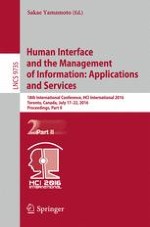2016 | OriginalPaper | Buchkapitel
Educational Externalization of Thinking Task by Kit-Build Method
verfasst von : Tsukasa Hirashima, Yusuke Hayashi
Erschienen in: Human Interface and the Management of Information: Applications and Services
Aktivieren Sie unsere intelligente Suche, um passende Fachinhalte oder Patente zu finden.
Wählen Sie Textabschnitte aus um mit Künstlicher Intelligenz passenden Patente zu finden. powered by
Markieren Sie Textabschnitte, um KI-gestützt weitere passende Inhalte zu finden. powered by
